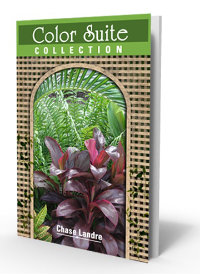Heliconia
Heliconia spp.
Beautiful heliconia with its exotic flowers gives a South Florida landscape the lush look of the tropics.
The unusual blossoms are similar to bird of paradise - and at first glance orange varieties of this plant are often mistaken for orange bird.
Flowers colors range from orange to red to yellow, and the blooms appear in warm months of the year.
These plants are not necessarily a good choice for every yard. They will spread 3 feet or more and need an area where they're allowed to do so, rather than being expected to stay put as a single accent in a mixed and varied bed.
Use well-defined edging to keep them in bounds...wide landscape blocks or a bed bordered by a walk or drive makes their natural desire to spread easy to control.
However, if you have the room, let them naturalize an area for a very unique and tropical look.
Most of these tropical landscape plants grow to about 3 or 4 feet tall, though some varieties can get much larger.
One called Lobster Claw (pictured below), with its unique claw-like flowers, can grow 6 feet tall, and other types as much as 15 feet.
Partial shade is best...but not dark dense
shade. And heliconias need regular attention - food and water - to look
their best and perform well.
Plant specs
This plant is a moderate to fast grower that prefers part shade and blossoms in spring, summer and fall.
It needs the warmth of Zone 10 to survive, and even there may die back somewhat during winter weather.
Zone 10B is ideal, though these plants do fine in Zone 10A if the planting area is protected from winter winds.
Ultimate size depends on the variety. The most common ones grow about 3 feet tall, and all can spread to cover an area as much as 6 feet wide.
Heliconias are considered deer-resistant plants, though we make no guarantees.
Plant care
Add top soil or organic peat humus to the hole when you plant. You might also add in composted cow manure to enrich the soil around the plant's rootball.
Trimming isn't necessary, though you'll want to keep the area edged to keep these plants from wandering into the lawn.
In spring (late March or early April) cut back to the ground any cold damaged stalks.
After a number of years, you may need to thin out an overgrown bed. Do this by removing older plants to give young ones a chance to grow and fill in the space.
This plant loves to be fed. Fertilize 3 times a year with a top quality granular fertilizer. Supplement feedings with regular applications of liquid fertilizer during warm months for heavier bloom.
Regular irrigation is a must. This plant needs water and and it needs it often (2 to 3 times a week in summer), though it doesn't do well in a boggy area.
Plant spacing
Place plants 3 feet apart. Come out from the house 2 to 3 feet.
Plant 2 to 3 feet in from a walk or drive.
Smaller varieties may work in a large container. At some point, you'll likely have to remove and thin them out.
Landscape uses for heliconia
- filling a "naturalized" area
- along a porch, patio or deck
- in front of a fence
- around a tree
GOOD SNOWBIRD PLANT? NO
COMPANION PLANT SUGGESTIONS: Nearby
plants that also like a regular watering might include hair grass,
bamboo, papyrus, azalea, and star jasmine.
Other plants you might like: Orange Bird of Paradise, Canna Lily
Take a break!
The ultimate guide to low-maintenance plants
and landscaping!
An ebook by
Chase Landre
author of
South-Florida-Plant-Guide.com
Learn more!
Get a greener thumb!
Want to learn more about South Florida planting, watering, fertilizing and dealing with weeds and pests?
See our Gardening How-To section for answers!
Get instant curb appeal!
An ebook by
Chase Landre
author of
South-Florida-Plant-Guide.com
Learn how to get instant curb appeal with fast growing plants and landscaping techniques!



